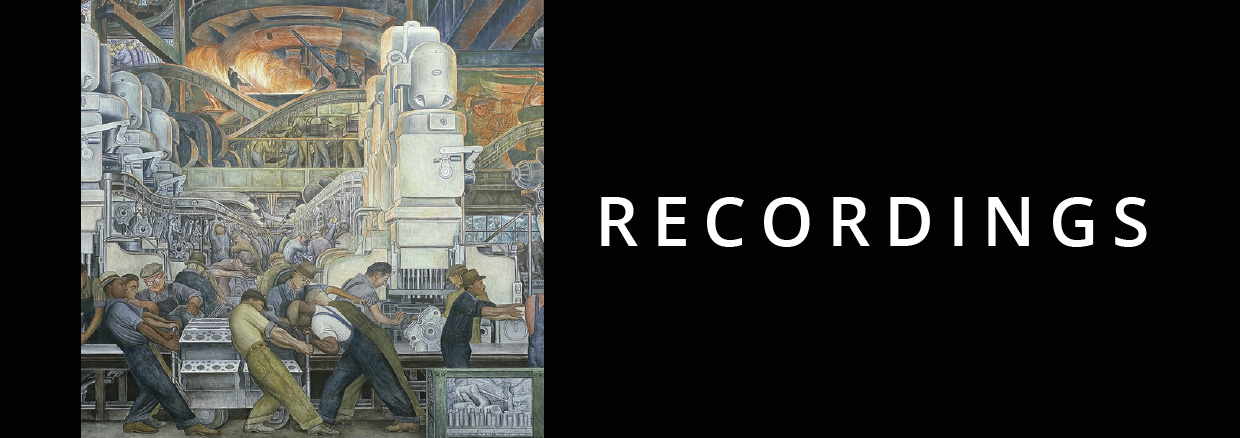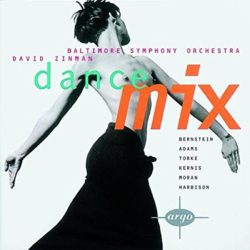
Dance Mix
Polygram Records/April 1995
Desi
Baltimore Symphony
David Zinman, conductor

REVIEW FROM CLASSICAL NET, 1996:
The title of this CD is a pun. When pop/rock records are extended and rhythmically enhanced for use in dance clubs (I guess cool people don’t call them “discos” anymore), the result is known as a “dance mix.” This Dance Mix is a collection of eleven short classical works for orchestra, all of them suitable for bootie-shaking, although only a few of them were intended for amateur or professional dance performances. The Bernstein, Harbison, Argento, and Torke were derived from longer works for the stage; the Adams was intended for his opera Nixon in China but didn’t make it into the final version. As far as I can tell, except for the Bernstein and the Adams, these are first recordings.
Most of this music refers to aspects of American pop culture. Michael Daugherty’s Latin-tonedDesi is a tribute to Lucille Ball’s television (and real-life) husband, Cuban-born Desi Arnaz, and Christopher Rouse’s Bonham, scored for eight percussionists, is a noisy act of homage to John Bonham, the late drummer for stadium-rock giant Led Zeppelin. (Did people really dance to that stuff? Perhaps, if one considers head-banging a form of dance.) With their themes of immigration, Leonard Bernstein’s West Side Story (the source for this disc’s Mambo) and Domenick Argento’s opera The Dream of Valentino (Rudolf, that is, and the source for this tango) present another part of the American experience, and what could be more American than The Great Gatsby and John Harbison’s operatic adaptation of the same? Aaron Jay Kernis claims that his New Era Dance was inspired by the events of 1992 (the resolution of the La riots, the upcoming presidential election) and by the eclectic mixture of musical and non-musical sounds in his Washington Heights neighborhood. In contrast, Torke’s and Moran’s works are more abstract and detached; Charcoal is characterized by its taunting tone and its occasional splashes of Ravelian color. Some of these works are better than others, but I think that about two-thirds of them have potential staying power. They’d be welcome encores on most orchestral programs.
Zinman and the Baltimore SO are intimidating performers. They set a high technical standard for future recordings of these works, but there’s room for competition, particularly if the competition can bring a little extra grace, humor, and friendliness to the music. The Chairman Dances, also recorded by Edo De Waart and Simon Rattle, is very serious here. The inclusion of two performances of Bernstein’s mambo, one at the beginning of the disc, and the other at the end, is curious. Argo’s recording is a roof-raising, rent-breaking, ear-shattering blast.
– Raymond Tuttle